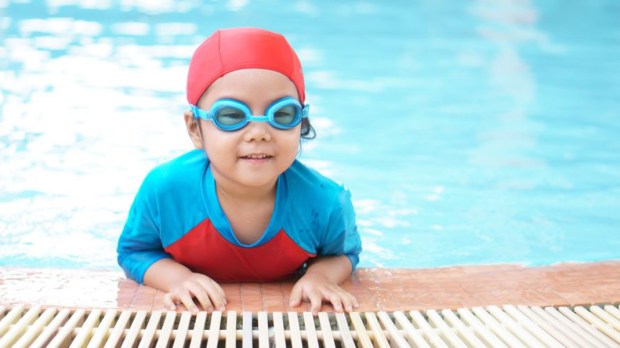Lenten Campaign 2025
This content is free of charge, as are all our articles.
Support us with a donation that is tax-deductible and enable us to continue to reach millions of readers.
As of this moment, I have four solid swimmers and one toddler. The toddler is not a solid swimmer — in fact, he’s somewhat afraid of the water, which is a blessing after his daredevil older brother. But we have a pool and we spend most of the summer in it, so this is the summer he must learn to swim.
I wish I could claim to have successfully taught my other four to swim, but that would be a flat-out lie. My oldest started swimming the second she hit the water, and my mom taught the other three (with great patience and lots of laughter, I might add). I picked up some tips from watching her last summer, and plan to implement them with my toddler this year. In case you’re in the same boat, here are five simple steps to teach your toddler to swim (joyfully!):
1
Play first
If your toddler’s first introduction to swimming comes with mom or dad abruptly dunking her underwater, chances are she’s not going to be super enthusiastic about swimming. I made this mistake with my second daughter, and it took years before she was swimming successfully. So if you want to teach your child to master swimming, the first thing to do is teach them to love the water.
The first time you take them in the pool, let them play. Sit on the steps with them and let them splash, let them hang on the wall … do anything and everything to make their first introduction to the water a fun, enjoyable one, without giving them a false sense of security.
2
Teach them to listen to the fishes
One of the most unpleasant aspects of swimming for kids is the sensation of having their ears underwater. So on that first excursion, sit on the steps with your toddler and show them how to “listen to the fishes” by submerging one ear, then the other. Make a game of it — ask them what kind of fish sounds they heard and make up silly fish noises together. Once they’re comfortable with having their ears underwater, the entire process of going completely underwater will be much less traumatic (for both of you).
3
Teach them to trust you first
Once you’re ready for the first actual swimming lesson, make it very clear that you will not do anything without telling them first. So before you even lift them off the step, say, “I’m going to pick you up now and take you into the water, but I won’t let you go.” Keep repeating to them that you’ve got them, that they’re safe, that they can trust you as you move slowly into deeper water. If they don’t trust you, their fear will prevent them from being comfortable enough to learn how to swim.
4
Get them used to leaning forward, not backward
Unless you start by teaching your child to float on their back (a technique I’ve never been successful with), you want to get them used to the sensation of leaning forward in the water with their feet behind them for propulsion. Although I love the convenience and security of puddle jumpers, they force toddlers to remain upright in the water rather than leaning forward. So instead of puddle jumpers, use old-fashioned arm floaties. Keep a firm grip on them the whole time, tell them that you’re going to lean them forward a little without getting their face wet, and then gently do so. Once they’re comfortable in that position, show them how to scoop the water to move forward before progressing to kicking their back legs.
5
Blow in their faces before taking them under
After a week or so of practicing the above steps, tell your child that it’s time to learn to go under the water. Remind them that you’ll tell them before you do anything. Then tell them that you’ll count to three, blow in their face, and dip their head under water. Blowing in their faces causes an automatic breath-holding response, so it’s important to do this immediately before submerging them. When you actually dip them under, rotate them 180 degrees to the side on the way down so the water rushes across the side of their face rather than straight up their nose.
Even with all the above steps, it’s likely that your toddler will come up spluttering and teary-eyed. That’s okay — you can leave it there for day one, and slowly build on this foundation … provided you’ve earned their trust. After all, toddlers know that you’re their only line of defense. If they’re afraid you’ll dunk them with no warning or let them go, their fight-or-flight response will kick in at the very sight of the pool. Once this happens, swim lessons will be a traumatic time and their fear will prevent them from being comfortable enough to relax, hold their breath, and learn to swim.
Most of all, don’t forget that your toddler is a small human. Like all of us, they have real fears and need real security in order to grow and learn. If you start to get impatient, remember that you’re teaching them a much bigger lesson than just how to swim — you’re teaching them how to trust you to get them through hard things. That’s a lesson they’ll carry into adulthood, one that will hopefully develop into a deep trust of their heavenly Father as well.

Read more:
7 Books every Catholic woman should read this summer

Read more:
8 Great movies to choose for summer gatherings

